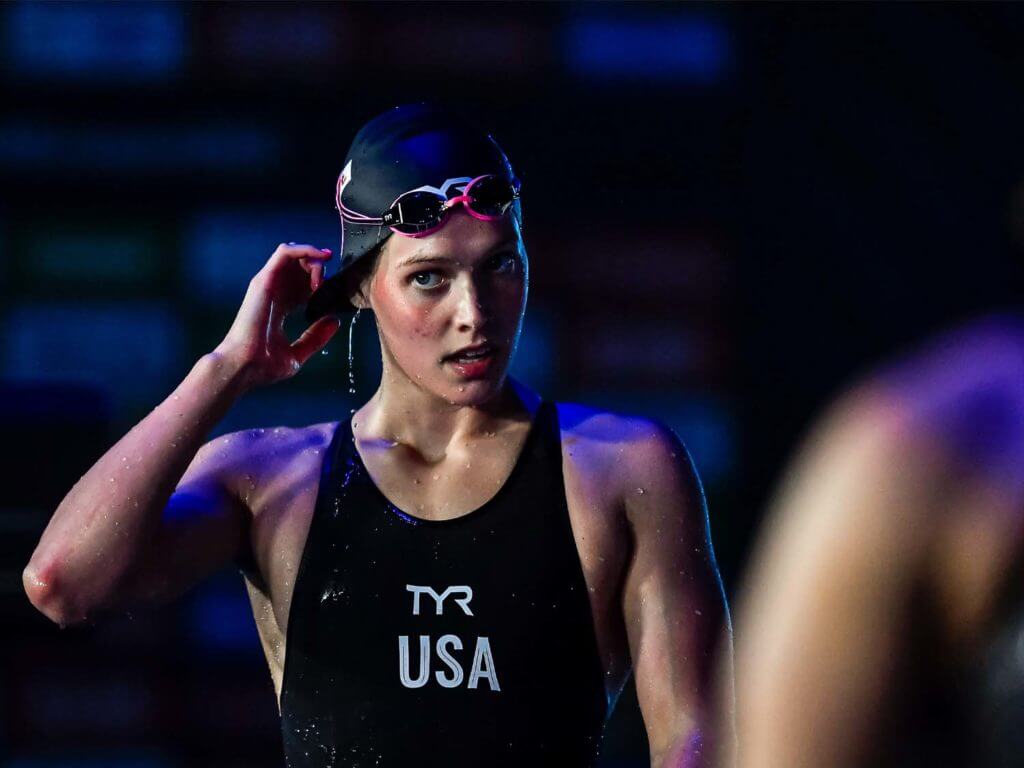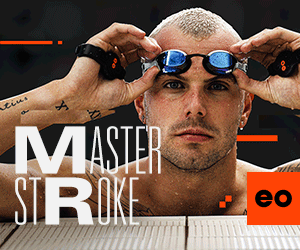What Claire Curzan Learned from Busy World Championships Debut

Editorial content for the 2022 FINA World Championships coverage is sponsored by eo SwimBETTER.
See full event coverage.
Swim faster... faster, with game-changing data insight into your technique. eolab.com #eoSwimBETTER

What Claire Curzan Learned from Busy World Championships Debut
At the World Championships in Budapest, Claire Curzan raced in 16 individual swims over eight days. After a strong performance at the U.S. International Team Trials where she won the 50 butterfly and also finished second in the 100 freestyle, 100 butterfly and 100 backstroke, Curzan did not drop any of those events from her Worlds lineup while also taking on anchor duties for four U.S. relays.
She performed admirably at Worlds as she claimed individual bronze in the 100 back and helped the Americans win four relay medals, including gold as part of the mixed 400 medley relay and women’s 400 medley relay. And after getting through the tough, eight-day competition and walking away with plenty of hardware, Curzan has every intention of sticking with her wide-ranging goals.
Curzan has always thought of herself as a butterflyer. The 100 fly, she said, “is the event that got me my first basically everything,” including her first trip to the Olympics in 2021. Freestyle is an obvious fit because of the importance of relays in both international swimming and in her future world of college competition. But backstroke isn’t going anywhere.
“I definitely want to continue working on all three strokes. I loved qualifying in all three and being able to compete in all three,” Curzan said. “I’m thinking about maybe doing more backstroke. I love fly and free, but I think I found a new passion for backstroke throughout the year, and Worlds kind of solidified it. I enjoy it. It honestly is easier for me to train. I’d love to maybe do 200 back more.”
Curzan called the 200 back “probably one of my more-liked events,” a rare sentiment among backstrokers who find the event among the most painful and difficult in the sport. Curzan swam a time of 2:07.31 earlier this year in the 200 back, and she currently ranks sixth in the world, although there are three Americans ahead of her. She considered swimming the event at the International Team Trials, but it clashed with the 50 fly.
As for other events that would fall into the realm of “distance” for a self-professed sprinter like Curzan, she has avoided those religiously at major competitions. For all her success in the 100 fly, Curzan has made no secret of her dislike of the 200 fly. “Don’t get me started,” Curzan said of the event.
But after fading in the 100 fly Worlds final from third at the halfway point to fifth at the finish, Curzan knows it might be time to embrace the dreaded event at least occasionally. As for training, she believes some 200-fly focused training, including “more endurance work, swimming out my fly more, not just doing pace and max all the time but doing 50s at 80%, 100s at 70% and learning how to not go all-out all the time,” might be beneficial.
What convinced Curzan of the value of racing the 200 fly? Watching another teenager, 18-year-old Australian Mollie O’Callaghan, even-split the 100 free and win a world title. O’Callaghan also races the 200 free (she took silver in Budapest), and her back-half abilities paid off significantly in the two-lap event.
“It blew my mind,” Curzan said of O’Callaghan’s race strategy, “because I’ve always done it where it’s basically fly-and-die. It’s just how I swim my race. So I think something in-season I might try to work on more is swimming the longer events. I think just getting comfortable with those longer distances so when I get to the 100s and the 50s, I’m able to approach it with more energy and just know that I will have a back half because I’ve trained in-season.”
From the standpoint of mental preparation, Curzan recognized some good and some not-so-good in her World Championships performance. For a few months prior to the meet, Curzan worked with a sports psychologist with a focus on accepting that training and racing will be painful.
“It sounds a little counterintuitive, but if you accept the pain, then it doesn’t hurt as bad allegedly,” Curzan said. “I’ve been working on that. Mainly, it’s just mental fortitude, be able to go to practice, being able to put everything I have and not be scared of that and then being able to come out, analyze what I did and be able to alter it going into my next practice.”
After the meet, Curzan made a list of what she thought she did well in Budapest and what needed improvement. She was pleased with how she was able to move from race to race throughout the meet and build upon her results, particularly when she bounced back from a slightly disappointing swim in the 100 fly to get onto the podium in the 100 back the next day. But she recognized that mastering pre-race self-talk remained a work-in-progress.
“Obviously, when you get to a meet like that and you’re competing for Team USA, you want to get on the medal podium,” Curzan said. “You want to win for your country. I think realizing that but trying not to think about it in the ready room was something that I can definitely work on.”





